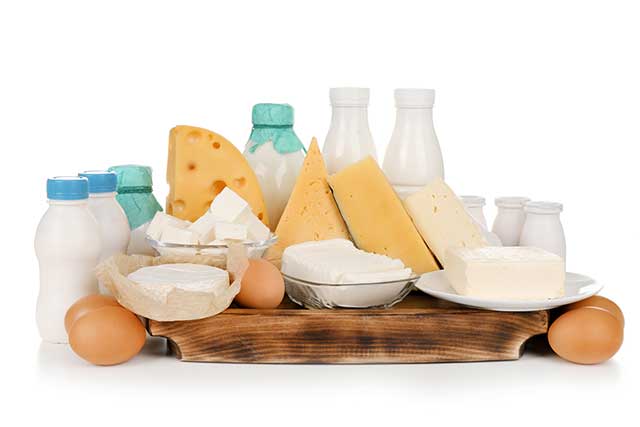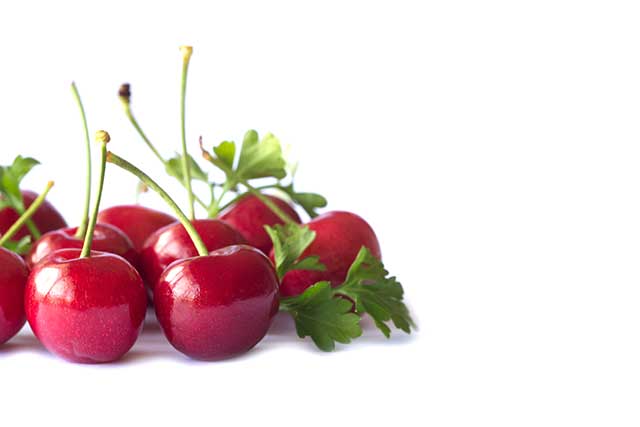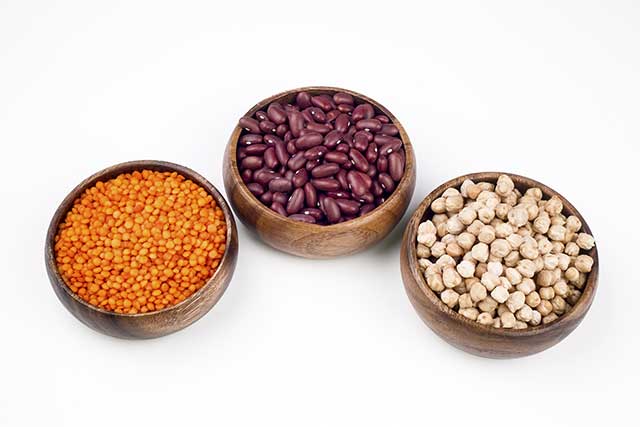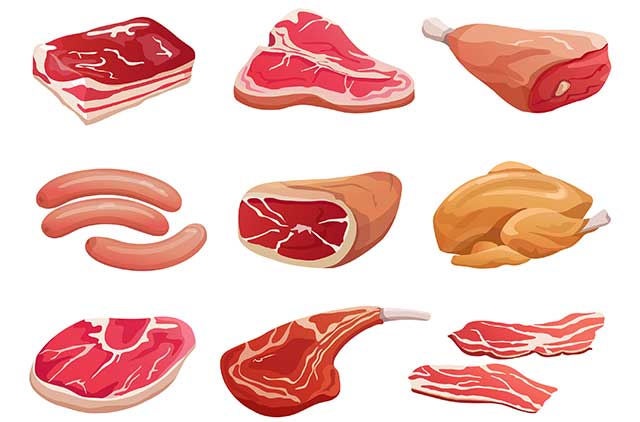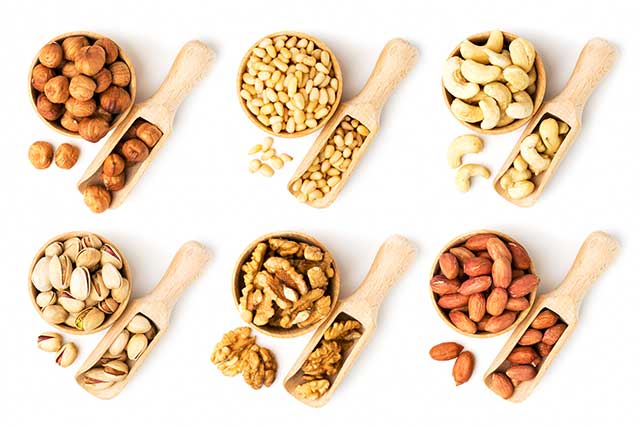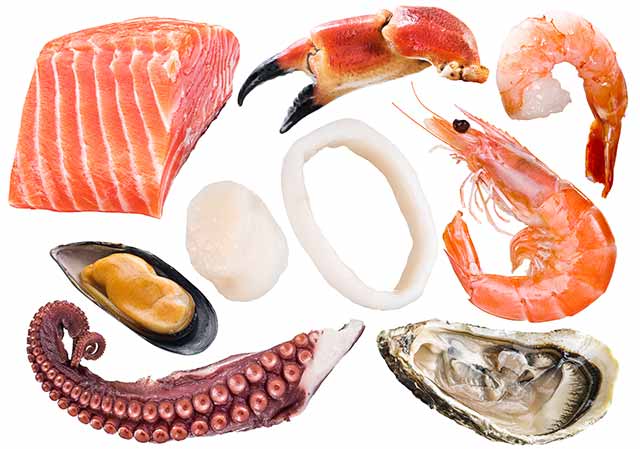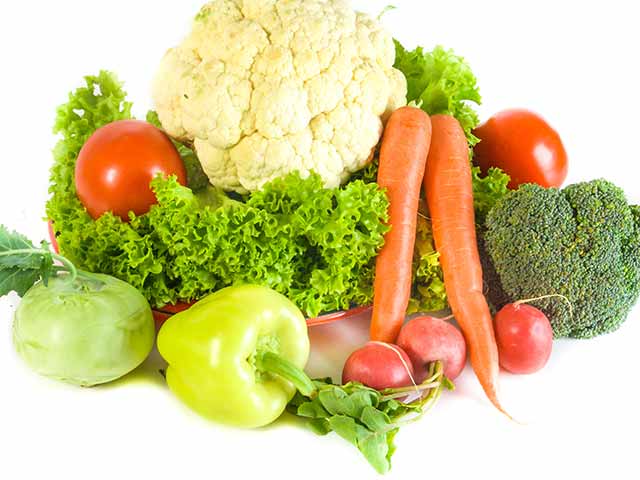We all have different protein needs, but it can be difficult knowing precisely how much protein common foods contain.
For this reason, this guide provides a simple overview of the protein content of 230 common foods.
The source of the data is the USDA’s food composite database, and all foods are per 100 grams raw (1).
Cereal Grains
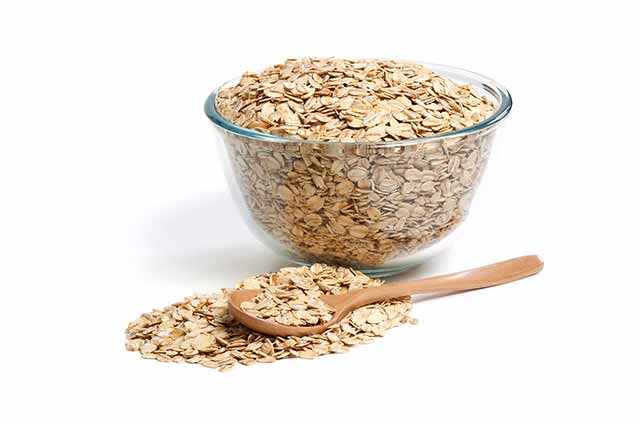
Cereal grains are moderately high in protein.
| Food | Protein Content (Per 100 g) |
| Amaranth | 13.6 g |
| Barley | 12 g |
| Bread (brown) | 11 g |
| Bread (white) | 9 g |
| Buckwheat | 13.3 g |
| Corn flour | 8.8 g |
| Corn grains | 9.4 g |
| Couscous | 12.7 g |
| Oats | 16.9 g |
| Pasta (dry) | 13 g |
| Quinoa | 14.1 g |
| Rice (brown) | 7.5 g |
| Rice (white) | 7.5 g |
| Rye flour | 10.9 g |
| Semolina | 12.7 g |
| Spelt | 14.6 g |
| Wheat flour | 12.0 g |
| Wheat (whole grain) | 13.2 g |
| Wild rice | 14.7 g |
Dairy Foods and Eggs
Dairy products are rich sources of complete protein, and cheese can be particularly high in protein depending on the specific type of cheese.
| Food | Protein Content (Per 100 g) |
| Brie cheese | 20.7 g |
| Buttermilk | 3.2 g |
| Camembert cheese | 19.8 g |
| Cheddar cheese | 24.9 g |
| Condensed milk | 7.9 g |
| Brie cheese | 20.7 g |
| Buttermilk | 3.2 g |
| Camembert cheese | 19.8 g |
| Cheddar cheese | 24.9 g |
| Condensed milk | 7.9 g |
| Cottage cheese | 11 g |
| Cottage cheese (low-fat) | 12.4 g |
| Cream | 2.1 g |
| Cream cheese | 6.2 g |
| Edam cheese | 25 g |
| Eggs | 12.6 g |
| Feta cheese | 14.2 g |
| Gouda cheese | 24.9 g |
| Gruyere cheese | 29.8 g |
| Milk (1% fat) | 3.3 g |
| Milk (whole) | 3.3 g |
| Mozzarella cheese | 22.2 g |
| Parmesan cheese | 35.7 g |
| Provolone cheese | 25.6 g |
| Quail eggs | 13.1 g |
| Quark | 12 g |
| Romano cheese | 31.8 g |
| Sour cream | 2.4 g |
| Swiss cheese | 27 g |
| Whey protein concentrate (Now Foods) | 72.7 g |
| Whey protein isolate (Now Foods) | 89.3 g |
| Yogurt | 3.5 g |
Fruit
Generally speaking, fruit is a poor source of protein.
However, some fruits do still contain small amounts, with dried goji berries being the most notable.
| Food | Protein Content (Per 100 g) |
| Apple | 0.3 g |
| Apricot | 1.4 g |
| Apricot (dried) | 3.4 g |
| Avocado | 2 g |
| Banana | 1.1 g |
| Blackberries | 1.4 g |
| Blueberries | 0.7 g |
| Cherries | 1.1 g |
| Dates | 2.5 g |
| Durian | 1.3 g |
| Goji berries (dried) | 14.3 g |
| Grapes | 0.8 g |
| Grapefruit | 0.8 g |
| Guava | 2.6 g |
| Kiwi | 1.1 g |
| Kumquat | 1.9 g |
| Lemon | 1.1 g |
| Lime | 0.7 g |
| Loganberries | 1.5 g |
| Mango | 0.8 g |
| Olives | 1.0 g |
| Orange | 1.0 g |
| Passion fruit | 2.2 g |
| Peach | 0.9 g |
| Persimmon | 0.8 g |
| Pineapple | 0.6 g |
| Pomegranate | 1.7 g |
| Prune | 3.7 g |
| Raisins | 2.3 g |
| Raspberries | 1.2 g |
| Star fruit | 1.0 g |
| Strawberry | 0.7 g |
| Tamarind | 2.8 g |
| Tangerine | 0.8 g |
Legumes
Legumes are generally the best plant-based source of protein. Legume products, such as extra-firm tofu are also very high in protein.
| Food | Protein Content (Per 100 g) |
| Black beans | 21.6 g |
| Chickpeas | 20.3 g |
| Green split peas | 23.1 g |
| Kidney beans | 22.5 g |
| Lentils | 24.6 g |
| Lima beans | 21.5 g |
| Miso | 12.8 g |
| Mung beans | 23.9 g |
| Natto | 19.4 g |
| Peanuts | 25.8 g |
| Pinto beans | 21.4 g |
| Soybeans | 28.6 g |
| Tempeh | 20.3 g |
| Tofu | 17.3 g |
Meat
For meat, these protein amounts are an approximate guide based on USDA data.
Meat products are a complete source of protein, but it is worth noting that the protein density of different meats can significantly vary. For instance, a skinless chicken breast will contain far more protein than a fatty steak or pork belly.
For anyone looking to maximize protein content, leaner meat offers the best protein to calorie ratio.
| Food | Protein Content (Per 100 g) |
| Bacon | 13 g |
| Beef kidney | 17.4 g |
| Beef liver | 20.4 g |
| Beef spleen | 18.3 g |
| Bottom sirloin | 20.6 g |
| Cervelat | 17.5 g |
| Chicken breast | 23.1 g |
| Chicken liver | 16.9 g |
| Chorizo | 24.1 g |
| Chuck eye steak | 19 g |
| Duck meat | 18.3 g |
| Flank steak | 21.2 g |
| Ground beef | 17.2 g |
| Ground chicken | 17.4 g |
| Ground lamb | 16.6 g |
| Ground pork | 16.9 g |
| Ground turkey | 17.5 g |
| Lamb chop | 18.3 g |
| Lamb heart | 16.5 g |
| Lamb kidney | 15.7 g |
| Lamb liver | 20.4 g |
| Liverwurst | 14.1 g |
| Pancetta | 9.3 g |
| Pepperoni | 23 g |
| Pork chop | 20.7 g |
| Pork kidney | 16.5 g |
| Prosciutto | 24.1 g |
| Ribeye steak | 17.3 g |
| Round steak | 22.2 g |
| Skirt steak | 23.1 g |
| Soppressata | 25 g |
| Strip steak | 23.1 g |
| Sweetbread | 20.4 g |
| Tenderloin steak | 20 g |
| Top sirloin steak | 20 g |
| T-bone steak | 20.3 g |
Nuts and Seeds
Nuts are another plant source of protein, and the amount of protein varies substantially from nut to nut.
| Food | Protein Content (Per 100 g) |
| Acorn | 8.1 g |
| Almonds | 21.2 g |
| Brazil nuts | 14.3 g |
| Cashew nuts | 18.2 g |
| Chestnuts | 5 g |
| Chia seeds | 15.6 g |
| Coconut meat | 3.7 g |
| Flaxseeds | 18.3 g |
| Gingko nuts | 10.4 g |
| Hazelnuts | 15 g |
| Hummus | 8 g |
| Macadamia nuts | 7.9 g |
| Pecans | 9.5 g |
| Pine nuts | 13.7 g |
| Pistachio nuts | 21.1 g |
| Pumpkin seeds | 18.6 g |
| Sesame seeds | 17 g |
| Sunflower seeds | 20.8 g |
| Tahini | 17 g |
| Walnuts | 18 g |
Seafood
In addition to offering lots of omega-3, vitamins, and minerals, seafood is also an excellent source of protein.
| Food | Protein Content (Per 100 g) |
| Abalone | 17.1 g |
| Anchovy | 20 g |
| Bass | 18.4 g |
| Bream | 24 g |
| Catfish | 16.4 g |
| Caviar | 25 g |
| Crab | 19 g |
| Cod | 19 g |
| Cuttlefish | 16.2 g |
| Eel | 18.4 g |
| Flounder | 12 g |
| Halibut | 20.8 g |
| Herring | 18 g |
| Lobster | 18.8 g |
| Mackerel | 19 g |
| Monkfish | 14.5 g |
| Mussels | 11.9 g |
| Octopus | 15 g |
| Oyster | 9 g |
| Salmon | 20 g |
| Salmon Roe | 21 g |
| Sardine | 25 g |
| Shark | 21 g |
| Squid | 16 g |
| Swordfish | 17g |
Vegetables
Vegetables are generally low in protein and they are not complete sources. However, their amino acids (protein content) still add to the amounts consumed within the meal.
| Food | Protein Content (Per 100 g) |
| Artichoke | 3.3 g |
| Arugula | 2.6 g |
| Asparagus | 2.2 g |
| Bell pepper | 1.0 g |
| Beet greens | 2.2 g |
| Bok choy | 1.5 g |
| Broccoli | 2.8 g |
| Brussels Sprouts | 3.4 g |
| Butternut squash | 0.9 g |
| Cabbage (green) | 1.3 g |
| Cabbage (red) | 1.4 g |
| Carrots | 0.9 g |
| Cauliflower | 2.0 g |
| Celery | 0.7 g |
| Chives | 3.3 g |
| Collard greens | 2.5 g |
| Dandelion greens | 2.7 g |
| Eggplant | 1.0 g |
| Endive | 1.3 g |
| Garlic | 6.4 g |
| Green onion | 1.8 g |
| Jicama | 0.7 g |
| Kale | 3.3 g |
| Kohlrabi | 1.7 g |
| Leeks | 1.5 g |
| Lettuce | 1.4 g |
| Mushrooms | 2.5 g |
| Mustard greens | 2.7 g |
| Okra | 2.0 g |
| Onions | 1.1 g |
| Parsnips | 1.2 g |
| Potatoes | 2.0 g |
| Pumpkin | 1.0 g |
| Purple sweet potato | 1.3 g |
| Radicchio | 1.4 g |
| Radish | 0.7 g |
| Rutabaga (Swede) | 1.2 g |
| Seaweed | 3.0 g |
| Shallots | 2.5 g |
| Spaghetti squash | 0.6 g |
| Spinach | 2.9 g |
| Sweet potato | 1.6 g |
| Swiss Chard | 1.8 g |
| Tomatillo | 1.0 g |
| Tomatoes | 0.9 g |
| Turnips | 0.9 g |
| Watercress | 2.3 g |
| Water chestnut | 1.4 g |
| Zucchini | 1.2 g |
Final Thoughts
Almost every food provides dietary protein, but some options offer a lot more than others. Also, the bioavailability rates differ between animal and plant sources of protein.
Overall, dairy, meat, seafood, and legumes/legume products tend to be the highest protein sources. However, other foods can also contribute.
Focusing on the higher protein choices in this list could help anyone seeking to increase their intake
For more information on the importance of protein, see this guide to the potential effects of inadequate protein intake.

